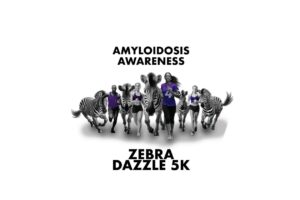As fog rolled rapidly though the Cumberland Mountains in Eastern Tennessee, it created a strobe-like effect as dawn was breaking. From a fire tower, Rockville’s John Kelly could be seen, then not seen, then seen again… climbing a long hillside cleared for power lines.
Conrad Laskowski and Ed Aramayo watched Kelly pick up something orange, shake it around and put it on his head.
“It was a wool hat,” Laskowski said.
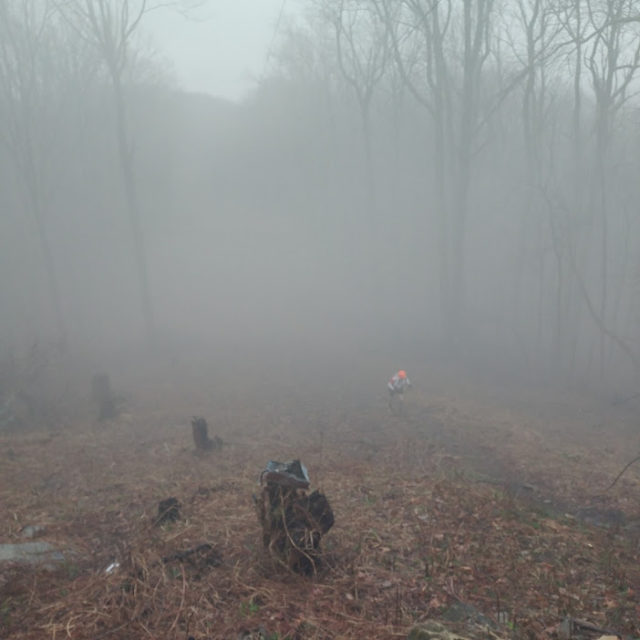
Even five days later, the excitement perked up Kelly’s otherwise calm even-keeled demeanor.
“I spotted that orange hat I’m like, ‘Score! this is awesome!” he said. “It’s one of the most exciting things I’ve ever seen.”
That hat, along with the plastic grocery bag he had fashioned into a poncho, helped Kelly, 32, mitigate the cold and rain and repurpose them to help propel him forward, with just a few miles to go in what was likely 130 miles over 59 hours and 31 minutes, over some of the most rugged terrain in distance running.
He became the 15th person to complete the Barkley Marathons over 30 years, the first from the Washington, D.C. area.
John Kelly’s 2017 Barkley Marathons finish. Video: Jamil Coury
“John’s performance this year was a clinic in how to succeed at the Barkley and the entire Barkley family was thrilled to see him become the fifteenth finisher,” said Keith Dunn, an Arlington resident who has been involved with the race for 13 years, some as a runner and, since 2009, the de facto voice of the race on social media.
Kelly resumed a long-dormant running career just four years prior and set out to systematically make that happen, piece by piece.
But anyone who has climbed a staircase in the dark knows, steps aren’t always so easy. Try climbing steps for 59 hours, 30 minutes and 53 seconds.
Gluttons for Punishment
Mike Tyson wasn’t talking about the Barkley Marathons when he said “everyone has a plan until they get punched in the mouth,” but he might as well have been. The race rewards resourcefulness and resilience, on top of endurance and navigational ability.
From the very start of the 2017 race, the 40 runners who headed into the woods at 1:42 a.m. Saturday April 1 dealt with fog reflected their headlamps right into their eyes. And it only got worse from there.
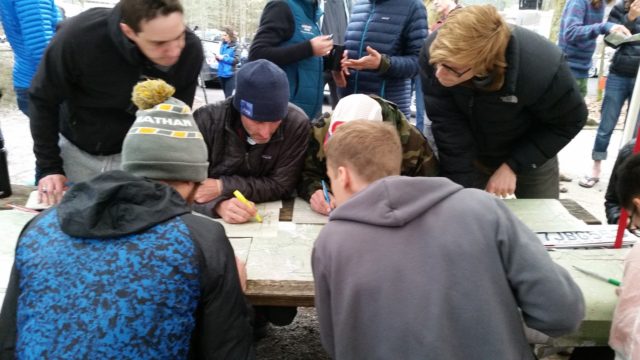
The race started to taunt James Earl Ray, who escaped from a nearby maximum security prison, now included on the race course, where he was serving a 99-year sentence for the assassination of Martin Luther King, Jr. When he found out Ray only made it eight miles in three days, Gary Cantrell, known as Lazarus Lake, said “I could make it a hundred miles!”
Thus, the Barkley Marathons was born, looping Frozen Head State Park in Morgan County, 13 miles west of Oak Ridge. Runners have less than 24 hours (it was roughly 10 this year) to check out the official map and create their own. GPS watches are confiscated and replaced with $11 models, the accuracy of which Lake spends months testing, or at least observing. He takes the watch that runs the fastest. Anytime during a 12-hour window, he will toot a conch, signaling a one-hour warning until the start, signaled when he lights a cigarette. This year, the conch sounded at 12:42 a.m. under a new moon.
Runners have 12 hours to complete each loop, touch a yellow gate and start on the next, unless they are only shooting for the 60-mile “fun run,” in which case they get a little extra time. During each loop, they search for 13 books from which they tear pages corresponding to their bib numbers for each lap, which serve as unmanned checkpoints. An unmanned aid station, at the fire tower, offers gallon jugs of (sometimes frozen) water. Though crew members can spectate there, following a three-mile uphill climb, they cannot render aid.
Between 1986 and 2016, with a one-year hiatus in 2002 thanks to a state budget crisis that closed the park, only 14 runners, all men, have finished five loops, with one finishing twice and another, three times.
Though the woods and hills are dense, runners are never more than two miles from a road. Nobody has died, nobody has been lost beyond the 60-hour time span.
Razor-sharp briers line long sections of the course. Infamous stretches get nicknames, like Rat Jaw, Testicle Spectacle, Big Hell and Son of a Bitch Ditch. Rat Jaw is the stretch along the power lines visible from the fire tower.
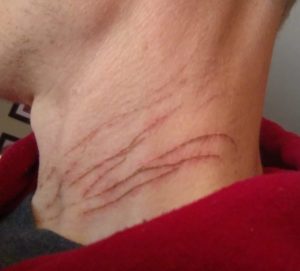
“The race has always been a cult race, even among ultrarunners,” Dunn said. “People’s reactions range from ‘that’s the stupidest thing in the world’ to ‘that’s not a real race because it’s designed for nobody to finish.'”
The race entry fee is a pack of socks, a license place and $1.60. That’s up from $1.55 in 1995, but runners get an even better deal, which is more of a curse. Those 20-mile loops advertised? They’re a little longer than that.
“The consensus, among people who have tried to map it out on Google Earth, is that a full Barkley is close to 130 miles,” Kelly said.
Over that distance, runners will climb 67,000 feet, and because what goes up must come down, they will accumulate 134,000 feet of total elevation change.
In late 2015, Netflix viewers got a look at The Barkley Marathons: The Race that Eats Its Young, a 90-minute documentary that brought the race to the masses and sparked interest in its traditions and challenge.
The race offers no trophies, and the post-race activity, even when someone finishes, is limited. When Kelly emerged from the shower at the campsite following his finish, almost everyone had packed up and left.
Though the race seems to incorporate aspects of orienteering, the course, while unmarked, is still mandatory. This year, Canadian Gary Robbins seemed to fall just six seconds short of the 60-hour time limit. But he got lost, bushwhacked his way down a hill and ended up approaching the finish gate from the wrong direction. The six-second margin was beside the point.
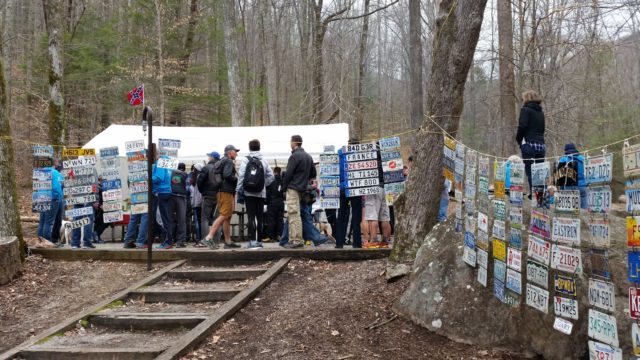
I Can See My House from Here
After running track and cross country at Oak Ridge High School, along with Aramayo, Kelly took a long hiatus from habitual running while attending North Carolina State University and then earning a doctorate at Carnegie Mellon University. In 2013, he ran the Marine Corps Marathon, but it did not go well.
“I wasn’t prepared, I didn’t know what I was doing,” he said. “My training was horribly insufficient. I might as well have walked the last eight miles, my legs cramped so bad.”
But a 3:38 finish didn’t deter him.
“If my goal was to see what I could do, I don’t think that cut it,” he said. “Maybe I should actually do some training, give it a shot.”
He eventually got a Boston Qualifier at the 2014 Mohawk-Hudson Marathon in New York, but it was a month after Boston registration. That trip to the Bay State would have to wait.
With a year and a half on his hands until Boston, he tried out some ultras and triathlons, and decided to head to Tennessee and run the course he could see from his childhood home.
“If anything was going to present a measuring gauge that was taller than what I am, Barkley was it,” he said.
He navigated the secretive entry process with a combination of his running and speed hiking resume and the legacy of being a local.
“What cemented me getting in was the hometown aspect,” he said. “Having someone from the area, much less right next to the park, whose family has been there for 200 years. For someone like that to actually have any credentials and wanting to do it…the odds are astronomical.”
So he was in, which set off the panic that he didn’t quite realize what he was in for. He scoured topographical maps to find the closest contour lines that would give him some steep climbs in the woods for training. A few blocks away from home in Rockville, he found a hill on the grounds of a middle school there he could climb 20 feet over the course of 132 feet, for 400 feet of elevation gain for every mile. He recorded 2,000 trips, on the dot, up that hill during his first year preparing for Barkley.
For all of his endurance, climbing and navigational savvy, something still caught up with him — his nutrition.
“I figured I could survive on energy bars and gels,” he said, “but after a while, your stomach basically says ‘nope.'”
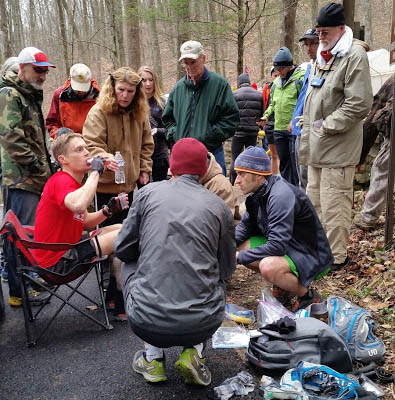
He couldn’t keep any food down, so he barely ate during his third loop, and even though he was sticking with Jamil Coury, who had run the prior year, when he got to the camp, he knew he was done. He had completed a “fun run,” but he was done for the year.
“My legs were alright, but my gas tank was empty,” he said. “I was in a bad spot. I could have gone out and gotten a few more books, but I knew I wasn’t going to finish.”
His wife Jessi was on his crew that year, with her father-in-law, and they were shocked at Kelly’s condition,
“It was really, really tough because I had never seen him like that,” she said. “I had seen him after marathons, but this was a whole other level.”
Preventing that from happening again drove Kelly’s training over the next year. With that experience, he knew the specific areas he needed to improve, and the worked to fit the process into his family and professional lives. With an infant son, he knew he had to be efficient. This year’s arrival of his twin son and daughter just added time pressure and a desire to be home when he could. He would run to work, giving him what he calls “free miles,” when we would be commuting between Rockville and Dupont Circle.
He catches the Rock Creek Trail a quarter mile from his house and takes the Western Ridge Trail once he reaches the D.C. line.
“It’s awesome. I live in a congested urban area and I can run 16 miles to work, 14 are on bike path or actual dirt trail,” he said.
Weekends were for hill work, and although his topographical research led him to a climb in Frederick that scales 500 feet in half a mile, he trained there sparingly, because the transit added up to two hours per trip. He wasn’t going to spend time away from home unnecessarily.
“It’s about open dialogue,’ Jessi Kelly said about the balance the family strikes. “John’s focused on quality time. When we’re together, we’re together.”
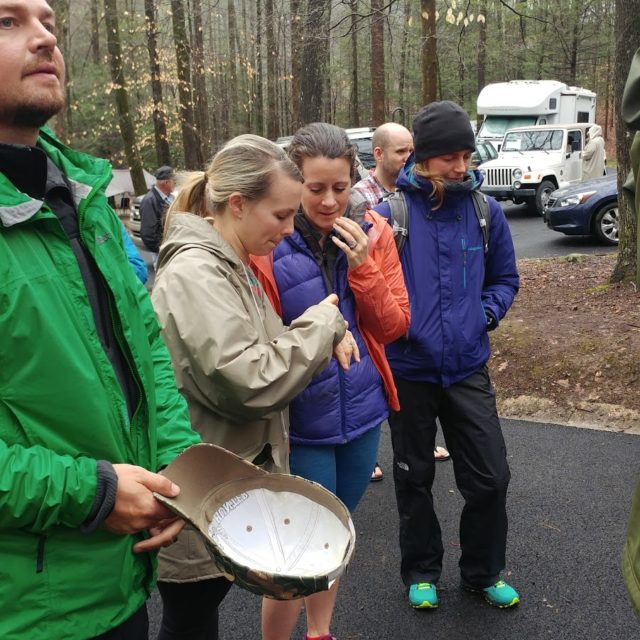
In the end, it feels to them like a family achievement.
“It makes him happy, it makes me happy to help him,” she said,
But John doesn’t plan on trading on that forever. While he insists this wasn’t a “finish or bust” year for him, because Kelly insisted on never thinking beyond the coming race, Aramayo and Laskowski figured that it may be.
“If I wanted to do it again, Jessi would support me, lovingly, but that wouldn’t not make me a jerk for doing it,” Kelly said.
He has fixed the nutrition component of his race, supplementing gels and bars with real food: salty maple nut bites, chocolate rice muffins, peanut butter and jelly rice waffles. He packs far more calories than he will consume in the later loops, early on carrying 2,500 calories, but lugging 8,000 calories toward the end.
“You could argue that I would be able to shed some weight if I didn’t take all of that fuel, but I never know what’s going to sound appealing,” he said. “I know my stomach is going to get more picky in the later loops.”

It’s an Entirely Different Kind of Running Altogether
Most of the Barkley course is off-trail and unmarked.
Using the full 60 hours to cover the likely-130 mile course, a runner would average 27:41 per mile.
“A few places that are highly runnable,” Kelly said. “At the end of each loop you’re coming down switchbacks on a gradual descent on well-maintained trail, you’re kind of letting it rip, there.”
But, “You can never just zone out and run, you have to focus on where you’re going.”
Other parts are uneven, unstable, un-runnable.
“It’s very important to have good form to make sure you’re being energy efficient,” Kelly said. “Heading down a hill, you’re making sure you’re putting the least amount of impact on key areas, while still taking advantage of the downhill. There’s lots of going downhill sideways to minimize heel strikes and the forward pressure on your foot.
“In the end, how you run is determined by how your body is feeling at the time. By the end of the race, no matter what you’ve done, you’re going to have something that hurts. You have to be able to adapt and still keep moving forward while that thing hurts.”
And sometimes those pains help. In the second half of the fifth loop, Kelly was suffering from blisters on his feet and damaged toe joints.
“I viewed those issues as pluses,” he said. “I could have altered my form to avoid that but I could have slowed down in the process. At the same time, that pain is probably keeping me awake.”
Dunn says that self-awareness is crucial.
“You have to know your physical limits,” he said. “A few people have succeeded on their first tray but frankly, they’re not human. You have to experiment a lot.”
That’s what makes Kelly’s achievement so noteworthy.
“To basically start running seriously four years ago and finish Barkley on the third try is amazing,” Dunn said.
Laskowski is a 2:26 marathoner who has cemented his respect for the Barkley Marathons after witnessing this year’s race and crewing for a French runner who made it through one loop. He checked out parts of the course and considered it against his own 45-mile run on the rocky Appalachian Trail.
“That was a joke compared to this,” he said. “The running I (usually) see is efficiency — trying to run for a time — and your threshold is your speed. Here, your threshold is your humanity, your ability to tolerate being totally demoralized in every single way and still being able to move ahead. For some reason, having the mental fortitude to keep moving ahead.”
Without the benefit of GPS trackers or much communication from the course, aside from what people report from the fire tower, those at the camp are left to wonder how their runners are doing.
“We’re at camp, making a story in our own mid of what’s going on out there,” Laskowski said. “They come in for 10 minutes and we rush to take care of them, then they’re gone.
“It’s a brilliant non-spectator sport.”
It’s also a far less-competitive environment than even the rest of the ultrarunning community, which is generally pretty cooperative. With so few Barkley finishers, there’s enough goodwill that everyone wants everyone else to finish, with that unlikelihood in mind. When a race can go years without a finisher, runners can take all the help they can get. They share their experiences and insights and help each other to the finish. When runners drop out, they stick around to swarm the remaining runners when they reach camp and offer aid.
“People are out there trying to find what they can do relative to themselves not relative to other people,” Kelly said. “Sure, there’s a racing element and you can measure yourself as to how you’re placing, but for the most part it’s the internal fight against your own limitations and the course.”
For four laps in 2017, Kelly and Robbins ran together. The pair spent most of that time talking about course navigation and what immediately ahead of them. So there were not as many deep philosophical discussions during their 48 hours together as some might expect.
“There are a few spots you can let your mind go at ease,” Kelly said. “We weren’t really chatting too much, though, you’d be surprised how little time you have to talk off-topic.”
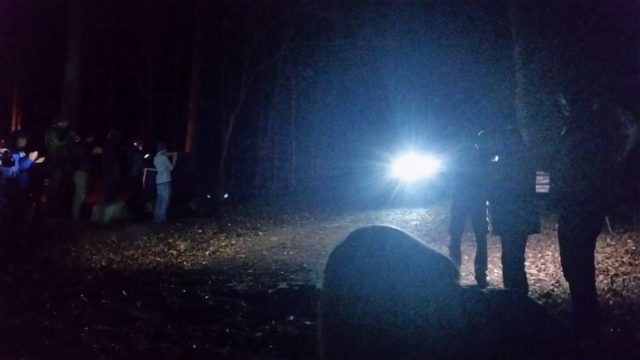
Night of the Running Dead
Assuming runners are prepared, sleep deprivation can have the greatest impact on a Barkley race. The physical and mental impacts fatigue can amplify quickly.
Rest is at a premium. Every second spent standing still is a second that isn’t spent moving toward the finish.
The flexible starting time presents a challenge for anyone trying to bank their rest beforehand — Kelly got roughly 45 minutes before the race started.
He would sleep in roughly 15-minute increments. Typically, runners sleep after loop three, but because the second loop ended at night, Kelly and Robbins took that opportunity to rest.
“You never ever, ever want to waste daylight doing something like napping,” Kelly said.
Involuntary naps can catch up at inopportune moments. Near the end of loop four in 2017, Robbins and Kelly were lost, trying to find the last book.
“We were standing there, trying to figure stuff out and I just fell over, into some leaves,” Kelly said.
Robbins turned around and roused Kelly, who said he instantly had laser focus and led them to the last book for the loop.
“It’s funny how much that brief respite for your mind can clear things up,” Kelly said.
Those delays at the end of loop four meant there was no time to rest at the camp, and the two parted ways, heading opposite directions on the course, with some adrenaline that wore off soon after.
“I made it an hour or so, but the caffeine wasn’t helping… past a certain point it can’t do anything,” Kelly said. “I couldn’t think straight, I couldn’t walk straight, I was worried I was just going to fall asleep while I was moving.”
His solution, rather than trusting the alarm on his cheap watch, was to give himself no choice but to wake up in a few minutes. Looking for the most miserable place to nap, he climbed a cold, windy ridge and lied down.
“My body would have the choice to be incredibly uncomfortable or wake up.”
He also took a second loop-five nap, on top of a mountain, on a rock.
“I think I hit my snooze button there and slept 20 minutes.”
Back at camp, Laskowski was sleeping in the car for a few hours at a time, and he would reflect on the luxury he was enjoying.
“I was going to sleep, and waking up, multiple times, and every time, they were still out there running,” he said. “That was the crazy part, the sleep deprivation.”
Kelly’s dealing with fatigue became legendary in 2016. Within a few miles of the start, he wound up going down the wrong trail spur and getting lost, alone, for an hour and spent the next four loops trying to catch someone else. When he got into camp at the end of the fourth loop, the 13 minutes he had to start loop five was too short for a nap, so he tapped the gate to start his fifth loop and promptly collapsed 100 yards up the trail, in full view of camp.
He woke and resumed the race, he eventually turned back after retrieving one page of the fifth loop.
“I was on top of a ridge looking down and wondering if I would be able to come back out on my own,” he said. “I turned and headed back to camp and fell asleep a few times on the way. It took me an hour to get to the first book, but four hours to get back.”

This is the Land of Confusion
After alternating loops clockwise and counterclockwise — a last-minute surprise — Kelly and Robbins agreed on the directions they would head when they were forced to diverge starting loop five. Kelly would go clockwise, Robbins, counter-clockwise would .
“I’ve always thought that clockwise is that way to go for loop five,” Dunn said. “You get the stupider stuff out of the way early. Others say counterclockwise is the way to go because you just did it and your memory is there when you’re exhausted.”
That was Kelly’s thinking, though he also picked clockwise for the scenery. The final book would be atop Chimney Top Mountain, where he could see his family’s farm.
“I hiked there a ton as a kid, I knew it really well,” he said. “I had always envisioned this grand moment when I’d get to the top, I’d rip out my last page and I’d be look down at the farm and have this victory march down into camp.
“It wasn’t like that at all…”
Rather than being able to enjoy that feeling, his thoughts returned constantly to reminding himself what he was doing and to not fall asleep.
“I was starting to lose the ability to tell what was real and what was in my head.”
With an hour and 40 minutes remaining, he had the last page and was feeling good. Then, the next thing he knew, he was down to one hour and 20 minutes and he didn’t recognize where he was.
“I don’t know if I fell asleep, or if I just zoned out and wandered,” he said. “It was so foggy I couldn’t tell.”
He wasn’t sure what was real and what wasn’t.
“Where am I? How did I get on this mountain? Is this Barkley?” he thought.
And he answered himself.
“This is Barkley. This is the fifth loop. You have all of your pages. You just have to get back to camp and touch the gate.”

He was able to find that last checkpoint and reorient himself. He had only been 100 yards from the trail.
It was cold, foggy and rainy. His feet were raw and the cold and pain were just enough to keep him from falling asleep. He worried that the rain and fog would make it hard to differentiate the creeks used for navigation.
“I was uncomfortably cold,” he said. “It was not dangerous cold, but if I stopped for a few minutes it would get dangerously cold. It was another factor that kept me moving, and moving fast.”
As he descended, he repeated his mantra, the only thing that mattered to him. For him, the only future he knew was, “Stay awake, touch the gate…Stay awake, touch the gate…”
Jessi was driving in from her in-laws’ house to make it in time for his finish, but almost missed it, pulling into the park when he was on the final stretch. John made it harder for her by continuing to run when he easily could have walked it in.
“I kept running because I thought if I stop, I might fall asleep,” he said. “I touched the gate and that was the first moment I was able to think about something else.”
Looking back, he realized how slim his margin was. “If I took a half-minute more per book, I’d have been over time,” he said.
“There was even more emotion than you can pick up watching the video,” Aramayo said.
Gloriously, his shower bore none of the burns familiar to distance runners. Despite his skin being carved up by briers for the last two-and-a-half days, he felt only comfort in the warm water.
Even though he had totaled less than two hours of sleep over three days, it wasn’t as easy as lying down and catching up.
“You can’t just close your eyes and sleep for 20 hours,” Kelly said. “You have a lot of aches and pains that prevent you from sleeping. Your mind is still keyed up.”
Even five days later, his sleep has been restless.
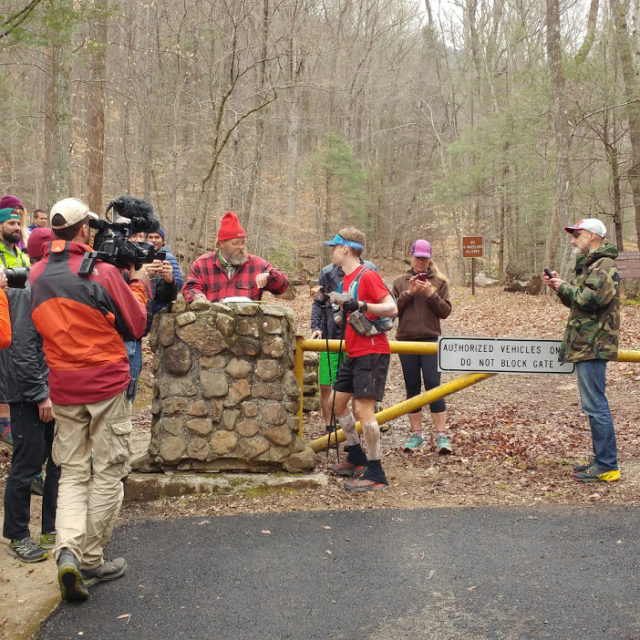
Old School Race in a New Age
Say the name Barkley Marathons to most people and their thoughts will jump to the documentary following the 2012 race.
Kelly says it’s an accurate depiction. It brought awareness of the race to the masses, beyond the race reports and the niche crowd of extreme ultrarunners.
Whether that is good or not depends on who you ask.
“I hear people who have been around the race a lot longer than me saying “I miss the old Barkley,” Dunn said.
In 2012, a record three runners finished, which could skew a laymen’s perception of how difficult the course is. The annual statistics compiled by 15-time Barkley started Matt Mahoney puts things back in perspective. Race reports, which he aggregates there, tell stories of triumph, failure, desperation and humor.
Despite growing up nearby, running track and cross country, Aramayro hadn’t heard of Barkley.
He felt the familiarity when they entered the camp and saw Lake hanging license plates from a tree, as though he and Laskowski had stepped into the movie.
Aramayo felt like a kid at the adult table, being in a foreign niche of distance running as he hung around the Barkley veterans.
“They were talking about running all of these ultras, running across the country,” he said. “The best I could say was ‘I like running.'”
Kelly isn’t worried that the documentary will cheapen the race. With a small campground, spectators are discouraged and most of those assembled during the race are serving as crew members, so there’s a limited chance to experience the real thing.
“You can’t explain Barkley to anyone unless they’ve been there and experienced it for themselves,” he said. “That’s the beauty of it. No matter how much exposure it gets, it’s still kind of secretive. There’s no way to get it unless you do it.”
Kelly sees a little hazard in race getting less esoteric.
“One of the downsides of the exposure is that you do get a lot of people (who) think it’s like a really hard Tough Mudder,” he said. “That it’s a bucket list item they want to get some day. It’s not.”
Lake holds a fall race that uses most of the Barkley course, with less ambiguity, and that seems to satisfy bucket listers.
Dunn said the race is more of a media spectacle than it once was, which Kelly said he will value more, someday.
With a two-year-old son and a boy and girl twin pair who are around six months, he looks forward to showing them some of the documentation. Right now the two-year-old has a rudimentary idea of why daddy’s feet hurt – “from running in mountains.”
“I’ll be able to look back on that with him,” Kelly said. “It might have annoyed me to have a cameraman following me up a hill, or having a drone flying over my head, eventually, I’m going to like seeing that stuff.”
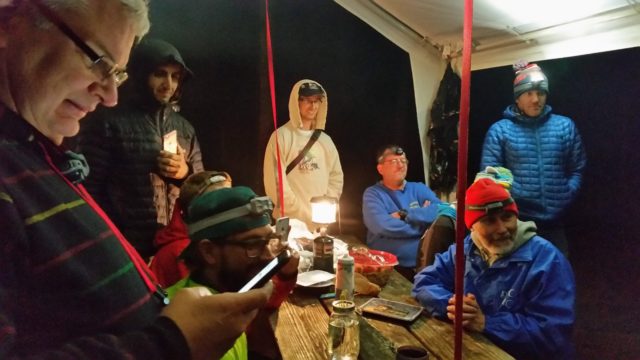
From the campsite, Dunn manned the Twitter updates for the race. He started that in 2009, in Twitter’s infancy, thinking it was the perfect match between the medium and an event. He can connect the public with what is going on, but still leave a lot to the imagination.
“Everything takes place at the gate,” he said. “It’s the best way to provide updates and create a Barkley-like experience for people who can’t be here,” balancing the voyeuristic Barkley fans with the sanctity of the campsite.
The #bm100 hashtag is crucial, Dunn said, to gleaning the best use of Twitter — aggregating the different perspectives on the race. But even if demands increase, he plans to keep specific details, like start lists, scant.
“Less is more,” he said. “This is a race for runners, not for spectators.”
Not so fast, there
If anyone needed proof of Barkley’s treachery, look no further than Arlington’s Mike Wardian. The ultrarunner extraordinaire made it into this year’s race, and started out strong. He beat Kelly and Robbins to the first book, but that was about as far as things went for him.
He wandered into camp 15 hours after he started, three hours beyond the cutoff, but psyched to make another attempt, now that he knows what skills he needs.
“I didn’t have the navigational tools,” he said. “You have to have the whole package. I had the fitness, I just didn’t know where to go. You can stick with someone who knows the course, and I could have, but I don’t think I would have had time to make all five laps.”
He took it all with good humor. When he reportedly remarked to Lake that “the Internet is going to troll me so hard,” he hadn’t yet seen the meme of the day, his face on a milk carton.
I already miss my friend @mikewardian. Such a fun adventure yesterday but all I have left is a pile of these milk cartons to look at. #bm100 pic.twitter.com/U526M4orat
— The Barkley Course (@BarkleyCourse) April 2, 2017
“Most serious athletes come out here and get humbled and they love it,” Dunn said. “It’s the runners who think they’re greater than they are who come here, get humbled, and complain about the race being rigged.”
Wardian was not the annual “sacrificial virgin,” let into the race to be made an example.
“You look at what Wardian did, one loop in 15 hours, and I’m not minimizing what he did, I’m using him because he’s a high standard for ultrarunning,” Dunn said. “Mike’s experience gives you an idea how hard the course it, John’s experience shows you what an amazing accomplishment it was.”
Kelly knows other runners look askance at Barkley, and ultras in general, as they could when extrapolating Kelly’s 2:49 marathon PR to his Barkley finish.
“”I feel like there’s a bit of the road runner crowd that looks down on the ultra crowd, to begin with. They say ‘None of those guys running ultras has broken 2:10 in the marathon, so if one of them moved up, they’d crush everybody,'” he said. “Maybe so, but maybe it wouldn’t be so easy. You have to have such a mix of capabilities: you have to have the endurance, the navigational ability, the will power and you have to be fast. You can’t just will yourself to a Barkley finish.”
He is nothing if not sure of himself and his place in his sport.
“I don’t do Barkely to impress Let’s Run people. I really don’t care what they think,” he said. “Unless someone is specifically looking for praise from someone, it shouldn’t matter why they do it. This is an event I place high value on; I didn’t ask you to place high value on it.”
Laskowski had no doubt in his mind. He’s been around all levels of running and even after he left the foggy woods, he was sure of what he saw.
“I did not expect to walk away from that feeling like I had witnessed, quite possibly, one of the most amazing athletic endeavors I had seen in my entire life firsthand. It was one of the most amazing things I had ever seen,” he said. “I have a hard time wrapping my heat around running 130 miles, period. To run 130 miles in 60 hours, with 45 minutes of sleep, in the rain, in the fog, in the dark, over that terrain. I can’t believe that there are two people on the fifth loop, let alone that they both finished about the same time. I still can’t fathom that.”
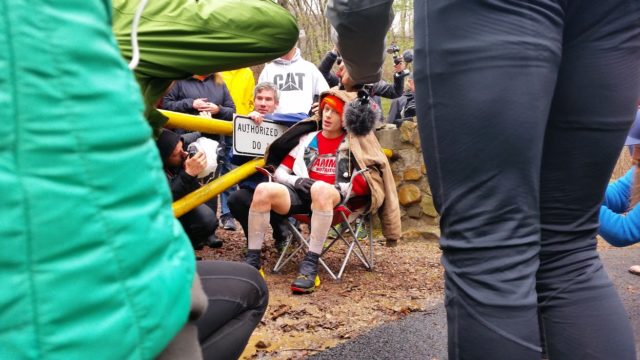
Poetic Justice
Kelly will be back, but likely not as a runner, anytime soon.
“I’ll never say never, but it’s a huge time commitment for myself and my family,” he said of training for the Barkley Marathons. “The second finish… there’s just not the same added value as the first. I’d rather come down and crew for someone, help someone else do as well as they can. Get that side of the experience.”
In the camp, minutes after Kelly finished. Someone approached Laskowski.
“Do you know what that is?” Pointing to the orange stocking cap Kelly had found. “It’s an inmate’s hat.”
Inmates from the Morgan County Corrections Department were out on Rat Jaw, cutting back the briers from the power lines. The race, inspired by one jailbreak, left the latest winner with an appropriate souvenir.
“I heard that too,” Dunn said. “It’s either a great urban legend at this point, or it’s truth.
“And the two often are the same at Barkley.”
The 2017 Barkley Marathons is over. There is one finisher. #BM100
— Keith (@keithdunn) April 3, 2017
Recent Stories
Looking for our race calendar? Click here Submit races here or shop local for running gear
Zebra Dazzle 5k Walk/Run or 100 Bike over 30 Days
Join the Zebras for this Zebra Dazzle event for all fitness levels. The 5k Walk/Run has 2 options. You can participate as an onsite participant on 9/13 at Carter Barron in Rock Creek Park, NW Washington DC or as a
Hero Dogs 5K9
Hero Dogs Inc will host its 5th Annual 5K9 race at the Congressional Cemetery on Saturday, May 17th, beginning at 8 am. There will also be a 1K Fun Run. The 1K Fun Run will start at 8 am sharp





